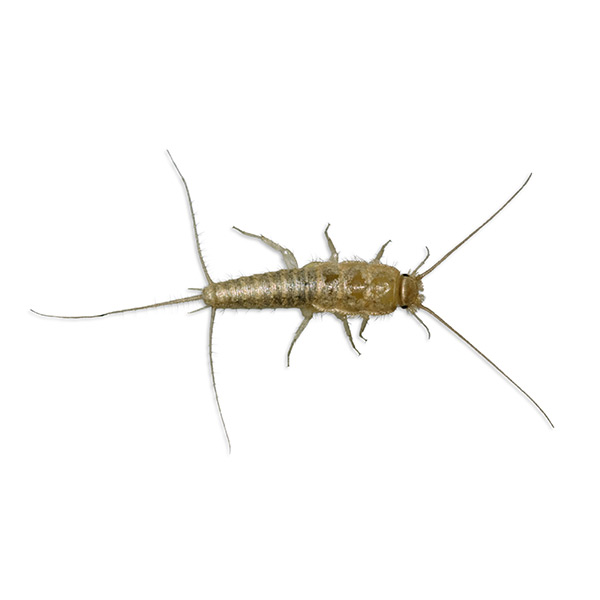Silverfish treatment
Silverfish Control Services
As an experienced pest control company, Ecopest is always available to care for your silverfish problem. Ecopest has numerous eco-friendly methods for controlling Silverfish. We can handle any size of infestation. We have effective silverfish extermination methods, including:
- Chemical treatments
- Spray treatments
- Vacuuming treatments
- Many other proven methods have been trusted for years.
When it comes to Silverfish Control, it is important to note that their infestations may be larger than you may expect, and with this, multiple visits by a professional may be needed. Ecopest does an amazing job in getting rid of these fast-moving, irritating pests.
Contact Us Today!

Things to Know About Silverfish
Silverfish can be identified by three long tail-like appendages arising from the tip of the abdomen. They also have chewing mouthparts; long antennae and the body is almost always covered with scales.
Size
Silverfish have a carrot-shaped outline and are usually a steel gray or metallic silver colour and measure about 1/2 – 3/4 inch in length. Silverfish prefer warm, damp, dark and undisturbed areas.
Food
Silverfish have been known to roam great distances in search of food. They consume both carbohydrates and proteins. Silverfish enjoy paper products and textiles. A specific delicacy for Silverfish is paper with a glaze on it. The glaze is usually made up of a starchy compound which they prefer. Silverfish will also eat the glue backing on wallpaper. These insects prefer textiles that are cotton or artificial silk.
Life Cycle
Female adults can lay one to two eggs a day. Silverfish have been known to live up to three and a half years passing through an unknown number of molts.
Damage
Silverfish feed and cause damage to a variety of materials but seem to prefer materials of plant origin that are high in carbohydrates and protein.
Silverfish prefer dark places and, because of this, are most active at night. Most species are found outdoors in hidden locations, such as under tree bark and rocks or in the nests of animals, but human dwellings provide a good environment for a few species. Inside the house, Silverfish can be found almost anywhere, but they tend to be most abundant in:
- Attics
- Basements
- Wall voids
- Hollow decorative beams
- Dark closets
- Bookshelves
- Storage rooms
They are often found in sinks, lavatories, and bathtubs because they have fallen in and become trapped while seeking moisture.
Houses with wooden shingles can be particularly attractive to Silverfish as they enter the home from under these shingles. In addition, infestations can start when eggs, nymphs or adults are brought into a house on infested cardboard boxes, cartons, furniture, or similar items.
Life History
Silverfish are insects that can have a long lifespan. The development time from egg to adult takes anywhere from three months to three years. Once reaching adulthood, Silverfish have the potential to live for an additional three years, bringing their total lifespan to approximately six years. Adults continue to molt throughout the remainder of their lives.
Adults lay eggs in cracks and crevices close to food sources. Depending on the species, adults lay 5-50 eggs per clutch. These eggs hatch into nymphs, which look like small adults. They molt several times during the nymph and adult stages and have been observed to shed their skins more than 30 times a year.
Since Silverfish prefer dark locations, it is often difficult to find their breeding locations. An experienced pest professional will usually have more success in treating Silverfish than most homeowners.
Pest Services
Products
What Makes Silverfish Harmful?
A silverfish infestation can cause major damage to your property. A silverfish population can eat the gum of book bindings, chew huge holes into paper, destroy cherished clothing, and create large carvings into your wallpaper.
Fortunately, Silverfish cannot transmit diseases like most other members of the insect world. Despite that, some people develop allergies to Silverfish. A silverfish population can attract other insects to the household as well.
